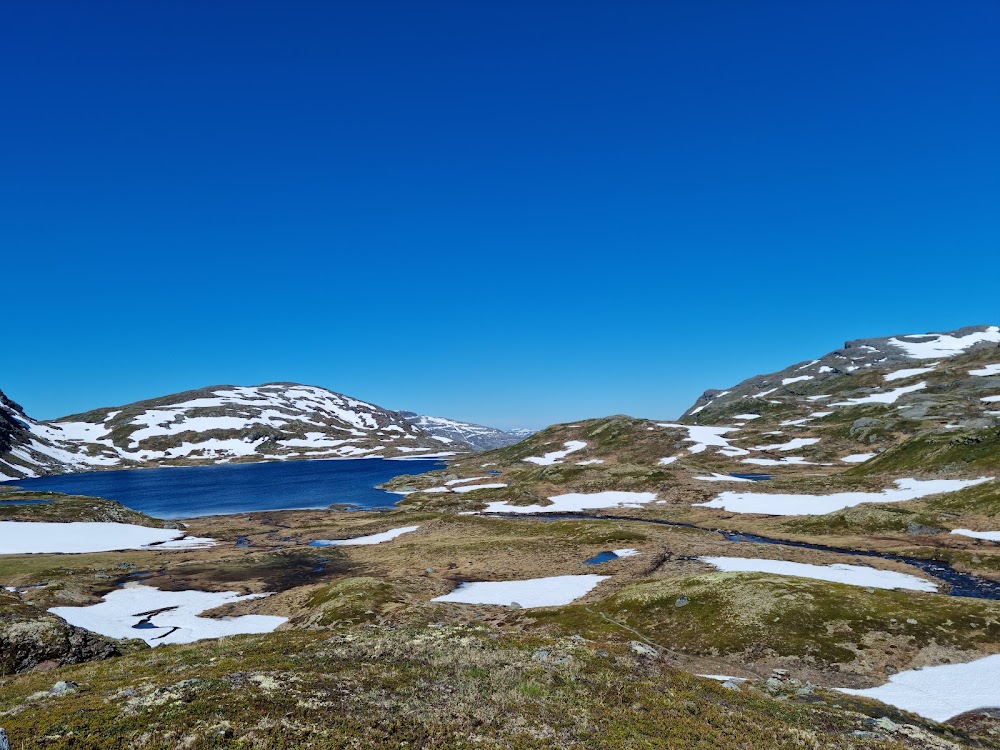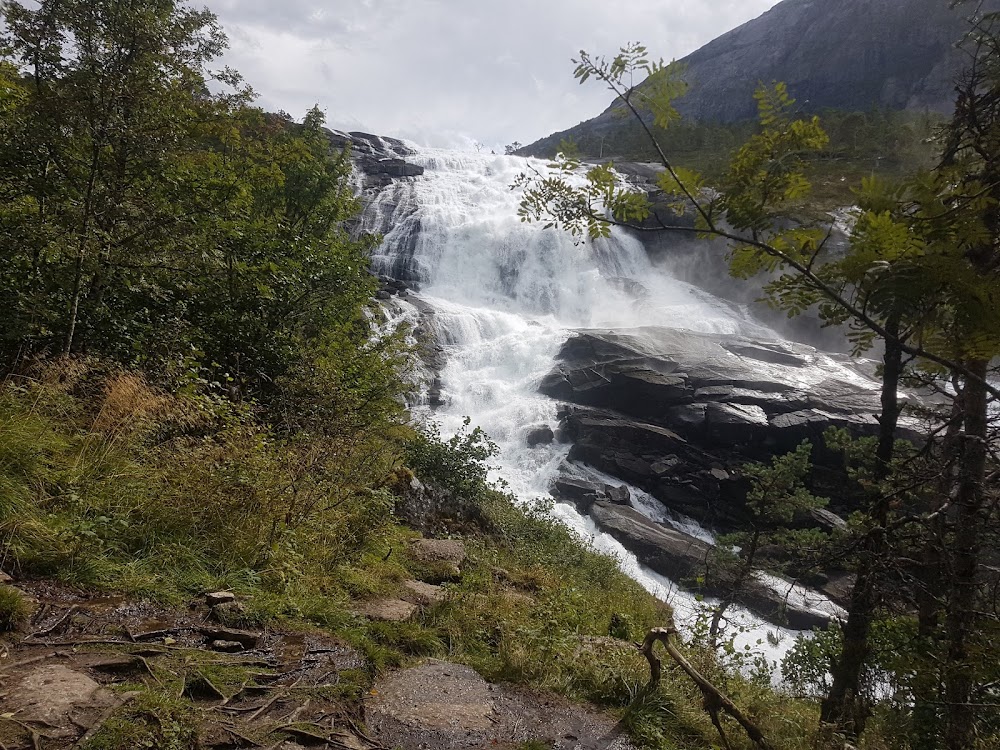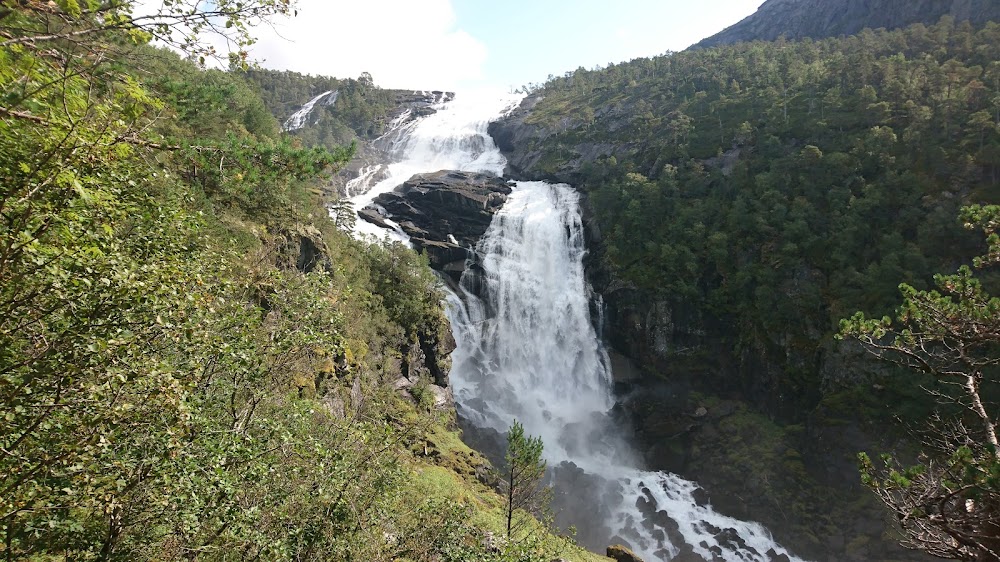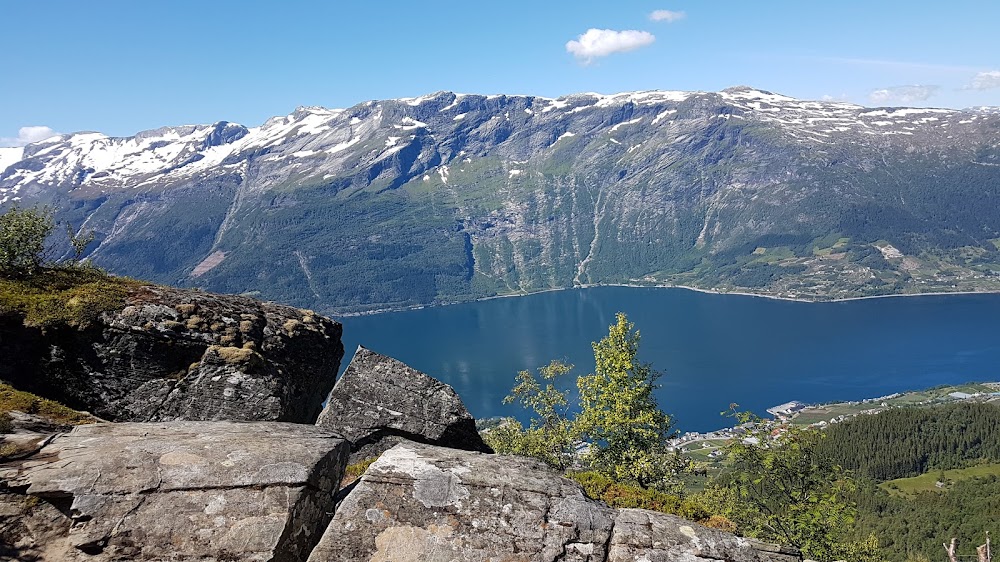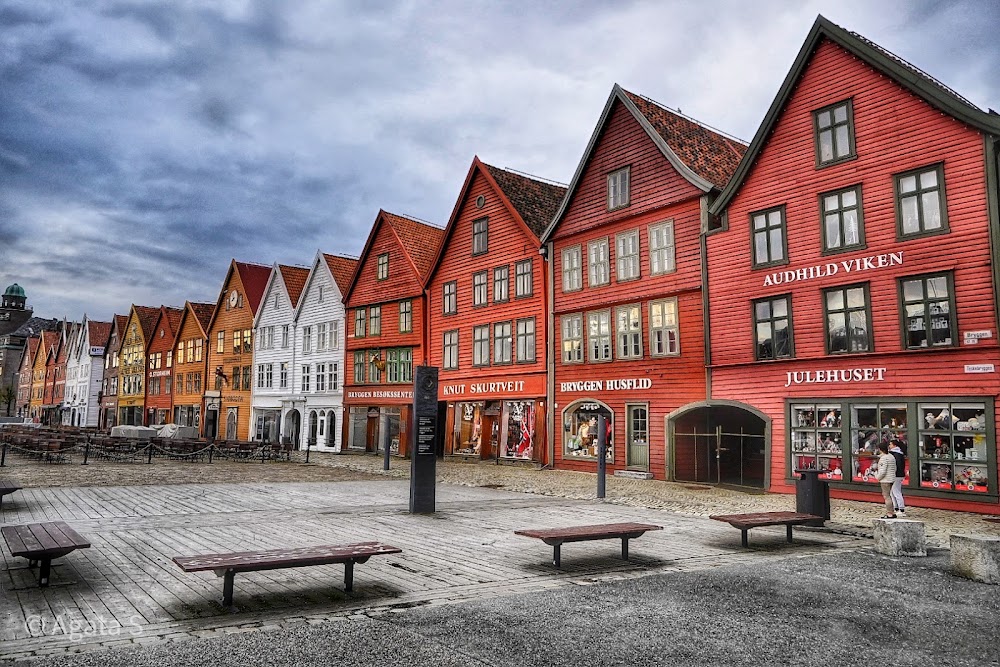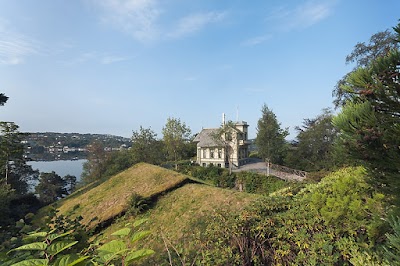Hardangervidda National Park (Hardangervidda nasjonalpark)
Related Places
Overview
Introduction to Hardangervidda National Park
Hardangervidda National Park, the largest national park in Norway, predominantly lies in Vestland and extends into neighboring counties. Spanning approximately 3,422 square kilometers, this stunning park was officially established in 1981 to safeguard its unique landscapes and diverse wildlife.
Landscape and Ecosystem
The park's landscape is characterized by a majestic high mountain plateau, fostering a distinctive subalpine and alpine environment. Here, vast moorlands, shimmering lakes, winding rivers, and towering peaks create an extraordinary ecosystem. This rich biodiversity attracts nature enthusiasts and wildlife researchers, offering a glimpse into the intricate relationships between flora and fauna.
Wildlife Wonders
One of Hardangervidda's most celebrated inhabitants is the wild reindeer. The park harbors one of Europe's largest reindeer herds, with thousands of these magnificent animals migrating across the plateau between their winter and summer grazing grounds. Witnessing this traditional migration is a breathtaking experience and a vital part of the park's ecological narrative.
History and Conservation Efforts
In the early 20th century, the notion of establishing a national park in this remarkable region gained momentum as conservation awareness grew. Local communities, scientists, and environmental advocates rallied for protective measures to preserve the area's unique environment and rich biodiversity. Balancing conservation with the interests of local residents, farmers, and industries posed various challenges along the way.
After years of discussions and negotiations, Hardangervidda National Park was officially created on April 10, 1981. The Norwegian government delineated the park's boundaries to encompass a variety of habitats, ensuring the protection of critical wildlife areas. This milestone marked a significant commitment to preserving Norway's natural heritage.
Management and Sustainability
The management of Hardangervidda National Park is a collaborative effort between local and national conservation agencies. Together, they work to maintain ecosystems, monitor wildlife populations, and facilitate research. Visitors are encouraged to enjoy the park responsibly, with an emphasis on education and sustainable tourism practices.
Recreational Activities
Due to its expansive size and remote location, Hardangervidda offers a multitude of recreational opportunities. Hiking is especially popular, with numerous marked trails suitable for various fitness levels. The renowned Hardangervidda Route, part of a larger European long-distance path network, traverses the park and provides breathtaking views and an authentic wilderness experience.
For fishing enthusiasts, the park's lakes and rivers are abundant with trout, offering ample opportunities for anglers. When winter blankets the landscape in snow, the park transforms into a serene wonderland, drawing cross-country skiers and snowshoers eager to explore its tranquil beauty.
Flora and Fauna
The park's flora is equally impressive, showcasing a rich diversity of alpine plants. During the brief summer season, the plateau bursts into life with vibrant wildflowers, mosses, and lichens. This colorful display attracts various bird species, including the rare Rock Ptarmigan and Golden Plover, making Hardangervidda a paradise for birdwatchers.
Visitor Regulations and Education
To ensure sustainable interaction with the environment, the park enforces regulations that minimize human impact. These include restrictions on motorized vehicles, camping guidelines, and designated areas for activities. Rangers and conservation officers patrol the area regularly to uphold these rules and assist visitors.
Education is a cornerstone of the park's conservation strategy. The Hardangervidda Visitor Centre, located in Eidfjord, offers interactive exhibits and informative displays about the park's natural history, wildlife, and conservation efforts. It also serves as a hub for guided tours and educational programs.
Conclusion
In summary, Hardangervidda National Park embodies Norway's commitment to preserving its natural landscapes. From its establishment in 1981 to its current status as a treasured natural reserve, the park plays a crucial role in protecting a diverse array of species and ecosystems. The collaborative efforts of conservationists, local communities, and the government ensure that Hardangervidda remains a pristine natural wonder, providing endless opportunities for exploration and education for generations to come.


